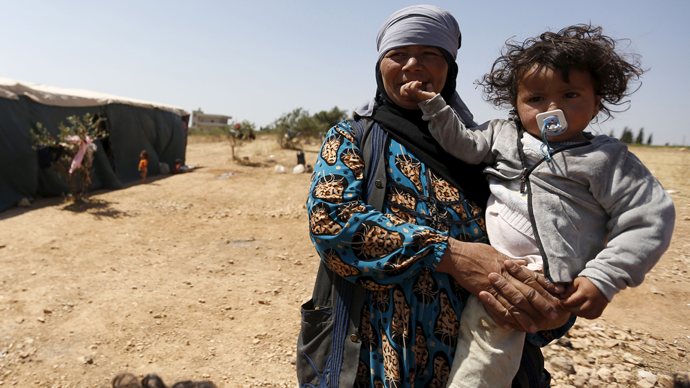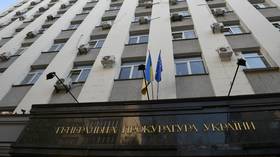ISIS fighters plant mines and bombs in Palmyra – monitor

Islamic State militants have planted mines and bombs in the ancient part of the central Syrian city of Palmyra, a UNESCO landmark, the Syrian Observatory for Human Rights said.
The monitoring group said it was unclear whether the fighters were planning to destroy the remains of the ancient city, or had planted the mines in a bid to stop government forces from advancing.
"They have planted [them] yesterday. They also planted some around the Roman theater, we still do not know the real reason," the head of the Observatory, Rami Abdulrahman, told Reuters.
Fears have been running high that after falling into jihadists' hands, Palmyra would suffer the tragic fate of the ancient Assyrian city of Nimrud, Iraq, which they devastated in March.
The remains of Palmyra, once one of the world's key cultural hubs, stand in the middle of the desolate Tadmorean Desert in Syria. UNESCO describes Palmyra as a city of "outstanding universal value," an "oasis in the Syrian desert" northeast of Damascus.
According to Syria's head of antiquities, Maamoun Abdulkarim, the report of ISIS militants planting bombs in Palmyra "seems true."
"The city is a hostage in their hands, the situation is dangerous," he told Reuters.
ISIS has declared a caliphate after capturing large parts of Iraqi and Syrian territory last summer. The jihadist group is ill-famed for extreme brutality, ethnic cleansings of minorities and executions of Western hostages, a number of journalists among them.
Late last month Islamic State militants gained full control over the city of Palmyra, the Syrian Observatory for Human Rights reporting that this is the first time the jihadists have taken a large population center directly from Syrian pro-government forces. In total, 49 people in and around the city have been killed by Islamic State, including members of the Syrian security forces in Palmyra, the monitoring group said.
According to the UN human rights office, a third of Palmyra’s population of 200,000 have fled the town. Syrian state TV reported last month that pro-government fighters had withdrawn from the city.
Hundreds of statues were moved from the city to locations safe from IS militants, Syria's Director of Antiquities Maamoun Abdulkarim told Reuters in May.
In March, IS militants destroyed a historic Assyrian city of Nimrud, which dates back to the 13th century BC. The extremists also destroyed a museum in Iraqi city of Mosul, which they captured in June. The group posted video online featuring militants destroying ancient statues and other artifacts, saying they are symbols of idolatry.
In February, they also blew up the Mosul Public Library using homemade bombs. The previous month, the militants took all the books from the Central Library of Mosul, leaving only Islamic texts.












